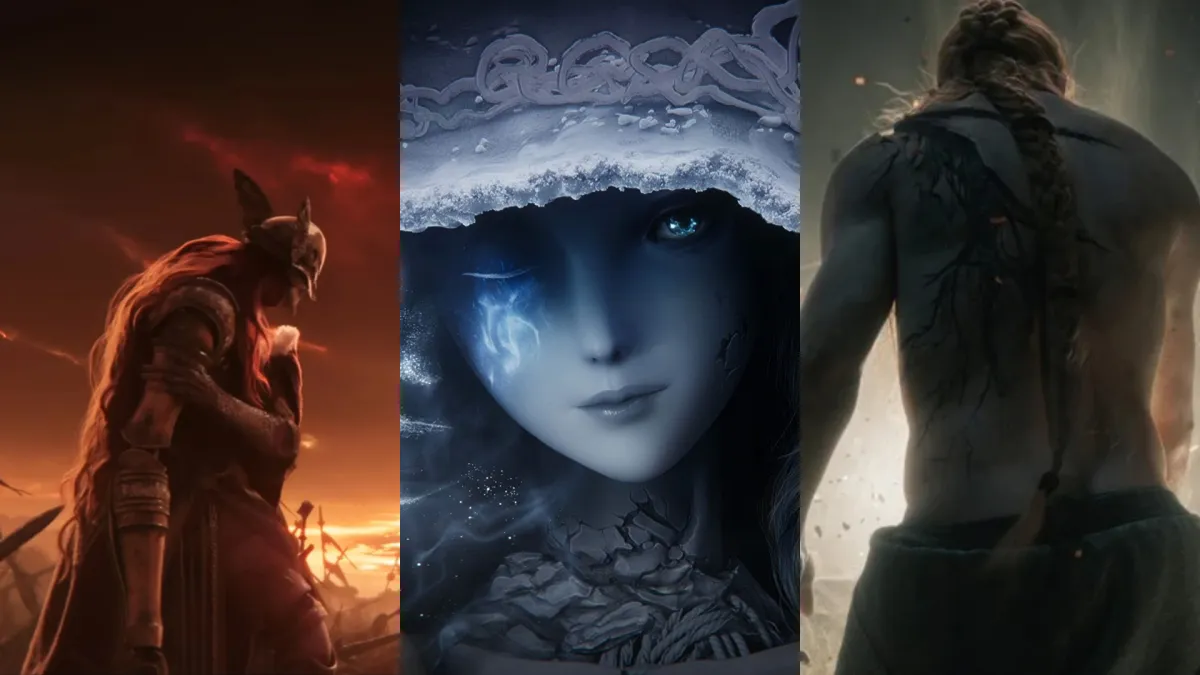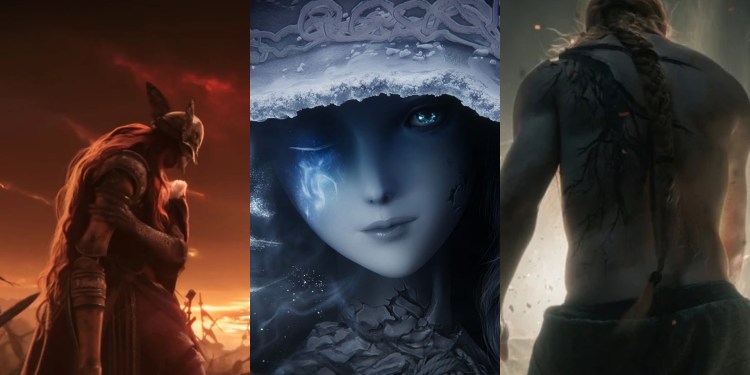FromSoftware games have a knack for telling stories that seem vague on the surface but conceal a mountain of depth. Cutscenes are few and far between, and a lot of the understanding comes from reading item descriptions, parsing environmental clues, and watching lore experts like VaatiVidya. With Elden Ring, FromSoftware has not only made one of the most celebrated open-world RPGs in a long while, but also the studio’s most approachable story to date.
Part of the reason for that approachability comes from the marketing for Elden Ring. The trailers leading up to the game’s release built intrigue, expanded upon events that are only briefly shown in the final game, and even showed major spoilers that would make no sense without the proper context. This is how the marketing of Elden Ring helped players understand the lore.
Elden Ring spoilers to follow.
The marketing expands on the lore of Elden Ring
When players first boot up Elden Ring, they’ll be presented with a brief but effective introduction that sets up the world and some key characters. But, unlike past FromSoftware games that use CG cinematics, this intro is only told through still images. As a result, there is a lot left to the imagination regarding details like how Malenia the Severed managed to defeat Starscourge Radahn, or how Ranni the Witch was involved in the Night of the Black Knives. The lengthy nature of the game means that it’s all too easy to forget the lore set up by the introduction. But, when you rewatch the introduction on New Game+ as well as the trailers that expand upon it, everything starts to click.
The story trailer for Elden Ring fleshes out many of the events shown in the introduction. Malenia impales Radahn to directly infect him with Scarlet Rot. She then whispers something to him before her Scarlet Aeonia attack creates a giant flower that bursts and likely covers Caelid with Rot.
Both the introduction and trailers depict the death of Godwyn the Golden at the hands of the Black Knives. However, the trailers also show the assassins making their journey towards Godwyn through a dense forest. It isn’t much, but it’s enough to get players wondering about where they were traveling from, and what that implies for characters like Ranni or Maliketh the Black Blade.
Trailers are almost always used to build hype and intrigue before a game comes out. However, it’s rare to see trailers that can provide additional value and context for players who have already beaten the game. Beyond being retroactively useful, these trailers also primed players to keep certain scenes and questions in mind before starting the game.
Elden Ring’s marketing presented important questions and teased the answers
Building excitement was an important function for Elden Ring’s marketing, but so was directing the attention of players to specific mysteries. Elden Ring’s trailers presented questions players kept in mind before starting their journeys in the Lands Between. In the story trailer, Ranni asks several crucial questions such as: who shattered the Elden Ring, and why? These are major beats in the lore of Elden Ring. By introducing them to players before the game came out, the marketing was hinting at which environmental clues and item descriptions players should be paying attention to.
Beyond teasing these mysteries, Elden Ring’s marketing also left hints to the answers right under our noses. Ranni questions what happened to the Elden Ring, but she doesn’t question anything about the Rune of Death being stolen. As Elden Ring players know, that’s because she stole the Rune herself. She had no need to let us know that before the game was out. Of course, players learn these details by playing the game. But, any would-be detectives who picked up on these subtle hints may have been able to make the lore connections much faster.
Another scene the trailers show is Morgott, The Omen King, placing down a crown on the Elden Throne. Out of context, this moment seems insignificant. Yet, players who remember this scene while playing Elden Ring would have realized that their victory against Margit, the Fell Omen, was just the beginning of his story and future return later in the game. Put simply, it was a spoiler. Yet, without the context of playing the game first, players wouldn’t have known. And it was far from the only time the trailers did this.
Major spoilers were shown without context
If you’re anything like me, you rewatched the Elden Ring trailers multiple times to glean anything new. That turned out to be worthwhile by the time the credits roll on the game. Some of the biggest secrets in Elden Ring’s lore were revealed in the very first trailer, and it creates a satisfying “aha” moment by the time the final boss battle begins.
The biggest spoiler that the teaser trailer flat out shows is Queen Marika the Eternal shifting between male and female forms. The reveal that Marika and Radagon of the Golden Order are the same being is a revelatory moment in Elden Ring, and the marketing didn’t hide it. Additionally, lore experts theorize that Marika shattered the Elden Ring, while Radagon tried to repair it.
This is on full display in the first teaser trailer, too. When players eventually reach Radagon of the Golden Order at the end of the game, it would dawn on them that the marketing was hinting at this conclusion from the very beginning.
Some spoken lines of dialogue throughout the trailers also manage to hint at potential spoilers. One such line is, “I doubt you could even imagine it, that which commanded the stars, giving life its fullest brilliance.” One potential interpretation of this is that it is hinting at the existence of the Outer Gods, including the Greater Will.
All of these potential spoilers would have made no sense to players without the context gained by playing the game. With that in mind, it’s clear that the Elden Ring marketing was designed to support players’ understanding of the lore both before and after experiencing the game.








Published: May 20, 2022 2:00 PM UTC